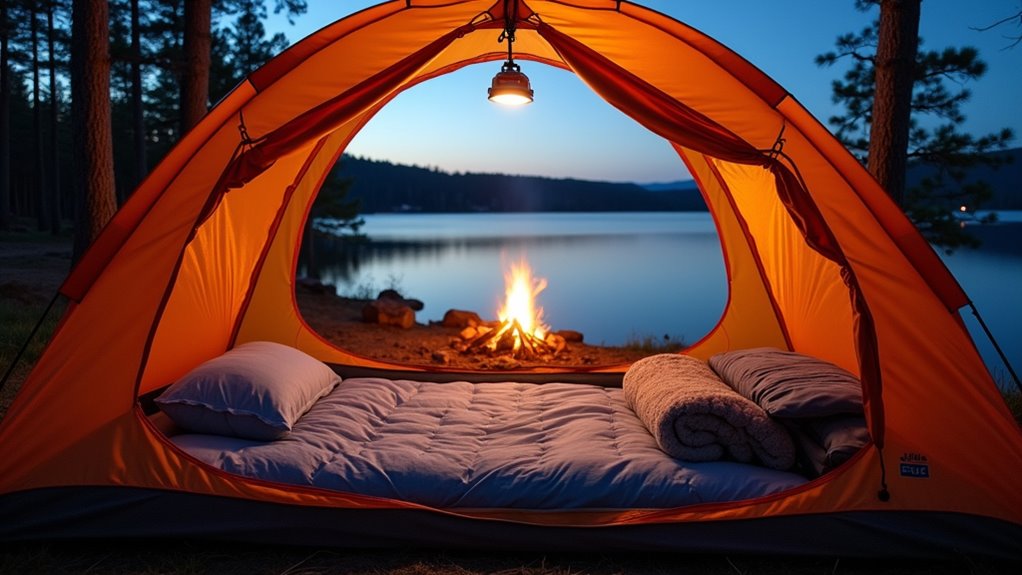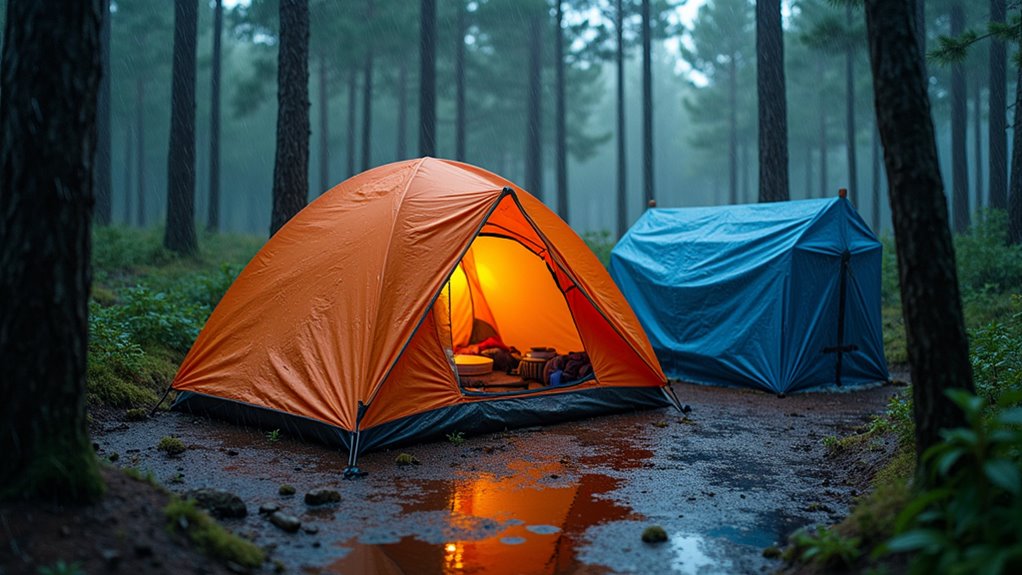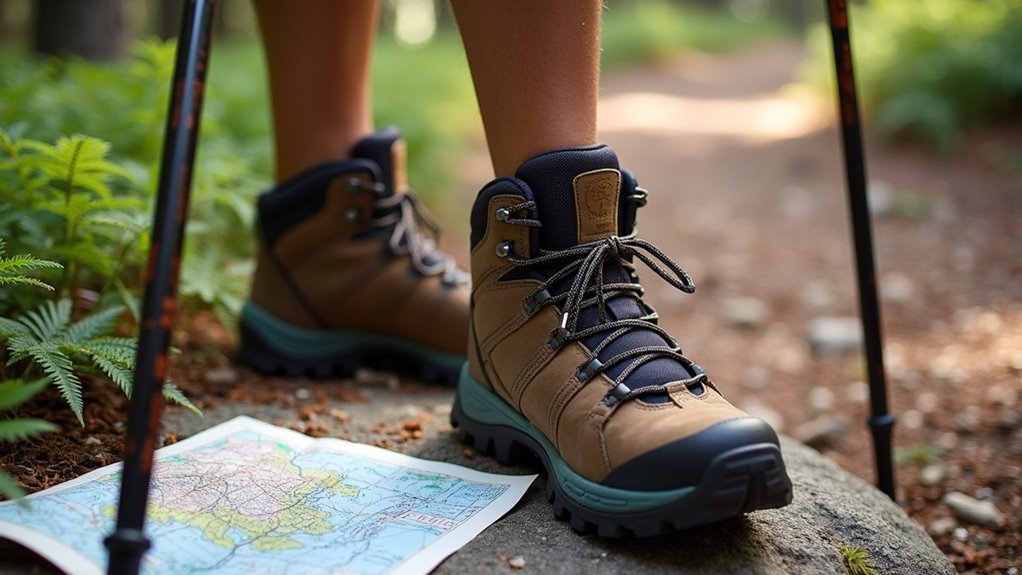To prevent chafing when hiking, you’ll want to wear moisture-wicking synthetic clothing, opt for compression shorts with seamless designs, and apply petroleum-based balms or anti-chafing sticks to high-friction areas like your thighs and underarms. Use merino wool socks and properly fitted shoes to control moisture and reduce foot friction, and keep your skin clean to avoid irritation. Staying hydrated also helps maintain skin resilience and speeds recovery if chafing begins. Additional techniques and gear details can further improve your hiking comfort.
When you’re hiking over long distances or in humid conditions, chafing can quickly turn a rewarding trek into a painful experience. Choosing moisture-wicking clothing is one of the most effective ways to prevent this issue. Synthetic fabrics, like polyester blends, reduce moisture retention and skin friction, making them superior to cotton, which holds sweat and increases abrasion risk. Compression shorts with a snug fit minimize skin-on-skin contact at common hotspots, while seamless designs eliminate abrasive stitching in high-friction zones. For added comfort, built-in mesh liners in shorts or underwear enhance breathability and reduce thigh rubbing, especially during vigorous movement.
Moisture-wicking synthetic fabrics help prevent painful chafing on long or humid hikes, outperforming sweat-absorbing cotton every step of the way.
Applying protective skin lubricants before starting your hike is another critical step. Petroleum-based balms create long-lasting moisture barriers, especially on high-friction areas such as the thighs, underarms, and feet. Anti-chafing sticks are convenient for portable, mess-free application, while chamois cream is especially useful if your hike involves cycling segments. Triple antibiotic ointments serve the dual purpose of preventing irritation and treating minor abrasions. Make sure you apply these before sweat accumulation, as timing greatly affects their effectiveness. Salt in sweat intensifies friction and inflames skin, so it’s important to use these preventative products before moisture builds up.
For thigh-specific protection, wear shorts with at least a six-inch inseam to prevent upper thigh exposure during each stride. Consider anti-chafing bands as physical barriers between skin surfaces, and opt for lightweight nylon fabrics to maximize airflow in humid climates. Wearing compression shorts instead of regular boxers provides extra support and acts as a barrier against trousers, significantly reducing the risk of chafing. As you build endurance for longer hikes, these protective measures become increasingly important to maintain comfort over extended distances.
Maintaining a daily cleaning routine removes salt crystals and bacteria that exacerbate irritation, while layered clothing systems help manage sweat during extended hikes.
Footwear and sock choices also play a major role. Merino wool socks, known for their moisture control, reduce blister-causing friction, especially when paired with moisture-wicking liners. Seamless sock construction eliminates pressure points, and gaiters keep debris out of your shoes.
Making sure your shoes fit properly prevents unnecessary movement and sliding, which can cause additional chafing.
For the shoulder and back, wear moisture-wicking base layers under pack straps, and apply lubricant to the trapezius and collar areas. Adjustable sternum straps distribute weight, while vented backpack designs encourage airflow.
Prioritize hygiene, immediate cleaning, and hydration to maintain skin elasticity and expedite recovery if chafing does occur.









